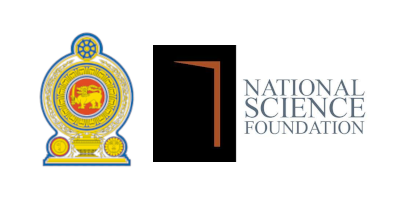5020 results
Search Results
Now showing 1 - 10 of 5020
Item Irrigation research possibilities in Sri Lanka(1980) Karunanayake, A.M.Item Annual Report of the National Science Foundation 1981(NSF:Colombo, 1981) National Science FoundationItem Do babies need water in Sri Lanka?(1999) Senanayake, M.P.; Weerawarna, H.; Karunaratne, K.W.; De Silva, T.U.N.Item The role of the administration in central-local relations:the legislative and executive control(Natural Resources Energy Science Authority of Sri Lanka:Colombo, 1991) Bandaranayake, S.A.Item Intensifying land use in irrigation schemes with other field crops(1992) Widanapathirana, A.S.; Rupasena, L.P.; Jayaratna, W.A.Item Health promotion through research and training in exercise and sports medicine(The Ceylon College of Physicians. Colombo, 1998) Goonewardene, I.P.Item Induced abortion-a hospital based study(The Sri Lanka Medical Association. Colombo, 1992) Fernando, D.N.; Rabel, R.A.S.A study of all cases of abortion admitted to randomly selected wards of three tertiary level institutions during a three month period was carried out. Relevent imformation was collected at the time of admission and by follow up of each patient,. BAsed on specific criteria, induced abortion and spontaneous abortions were identified. A random sample of women admitted for delivery during the same period was included as a 'comparison' group. Of the total group of women admitted with a history of abortion 64perc. have had induced aborions. These women were comparatively older, had one or more live children, were of a lower educational level and a majority admitted that the pregnancy was unplanned. A substantial proportion had practised traditional methods of contraception proir to the present pregnancy. This observation is of importance to programme planners, as failure of the contraceptive method used, whatever it be, could be a contributory factor for induced aboetionItem Development of a defined diet to rear the tea tortrix, Homona coffearia Nietner, in vitro(Tea Research Institute. Thalawakele, 1982) Gnanapragasam, N.C.Item Field sanitation and the occurrence of brown spot disease of rambutan (Nephelium lappaceum) fruits(National Science Council:Colombo, 1999) Sivakumar, D.; Wijeratnam, R.S.W.; Wijesundera, R.L.C.Rambutan fruits harvested from fields where leaf litter was allowed to collected showed a higher incidence and severity of brown spot caused by Gliocephalotrichum microchlamydosporum. G. microchlamydosporum, two other postharvest fungal pathogens, Colletotrichum gloeosporioides and Botryodiplodia theobromac were also isolated from leaf litter.
